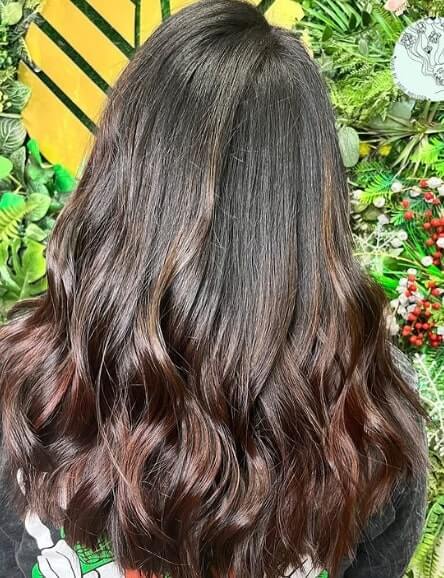
Have you ever noticed your black hair appearing brown when exposed to sunlight? This seemingly strange phenomenon is actually quite common and has a scientific explanation. While it might seem like magic, the way light interacts with your hair color plays a crucial role in this visual shift. In this article, we’ll delve into the science behind why black hair looks brown in the sun, exploring the properties of melanin, the impact of UV rays, and how our perception of color is influenced by these factors.
This comprehensive guide will break down the process step-by-step, starting with an overview of black hair color and its unique characteristics. We’ll then examine the role of melanin in absorbing light and how sunlight interacts with different hair colors. Finally, we’ll discuss the phenomenon of UV rays scattering off dark hair strands, leading to a noticeable shift towards warmer brown tones.
Black Hair Color
Black hair is characterized by a high concentration of melanin, a pigment responsible for giving our hair its color. There are two types of melanin: eumelanin, which produces black and brown hues, and pheomelanin, which contributes to red and blonde shades. Black hair predominantly contains eumelanin, resulting in its deep, rich pigmentation.
The amount of melanin present in each hair strand varies from person to person, influencing the shade of black. Some individuals may have a lighter black with subtle brown undertones, while others possess a truly jet-black hue. This variation in melanin concentration contributes to the diversity of black hair colors observed across different populations.
Sunlight and Melanin
Sunlight is composed of various wavelengths of light, including ultraviolet (UV) radiation. When sunlight hits our skin or hair, it interacts with the melanin pigments present. Melanin acts as a natural sunscreen, absorbing UV rays and protecting underlying cells from damage.
The higher the concentration of melanin, the more effectively it absorbs UV radiation. This is why people with darker skin tones have greater protection against sunburn compared to those with lighter skin. Similarly, black hair, due to its high eumelanin content, absorbs a significant amount of sunlight.
UV Rays and Light Scattering
UV rays have shorter wavelengths than visible light. When these rays strike a dark object like black hair, they scatter differently compared to longer wavelengths of visible light. This scattering effect causes the perceived color of the hair to shift towards warmer tones, such as brown or reddish-brown.
The intensity of sunlight also influences this phenomenon. On sunny days with higher UV radiation levels, the scattering effect is more pronounced, leading to a more noticeable change in hair color. Conversely, on cloudy days with less intense sunlight, the color shift may be less apparent.
Brown Tones in Sunlight
The brown tones observed in black hair when exposed to sunlight are not a result of any chemical change in the hair itself. Instead, it’s a purely optical illusion caused by the interaction of UV rays and melanin pigments.
The scattered UV light interacts with our eyes differently than the original wavelengths of visible light, creating the perception of a warmer brown hue. This phenomenon is similar to how objects appear different colors under various lighting conditions.
Perception of Color Shift
Our perception of color is influenced by several factors, including the surrounding environment, individual differences in vision, and the angle of light hitting an object. When sunlight interacts with black hair, it creates a complex interplay of wavelengths that can alter our perception of its true color.
This color shift may be more noticeable to some individuals than others depending on their sensitivity to different wavelengths of light. Additionally, factors like the time of day, weather conditions, and personal experiences can also influence how we perceive the color change in black hair.
Conclusion
The phenomenon of why does my black hair look brown in the sun is a fascinating example of how light interacts with matter to create visual illusions. While it may seem surprising at first, understanding the science behind melanin absorption, UV ray scattering, and color perception helps explain this common occurrence.
Next time you notice your black hair taking on a warmer hue under the sun, remember that it’s not a change in your hair’s actual color but rather a captivating interplay of light and pigment.
